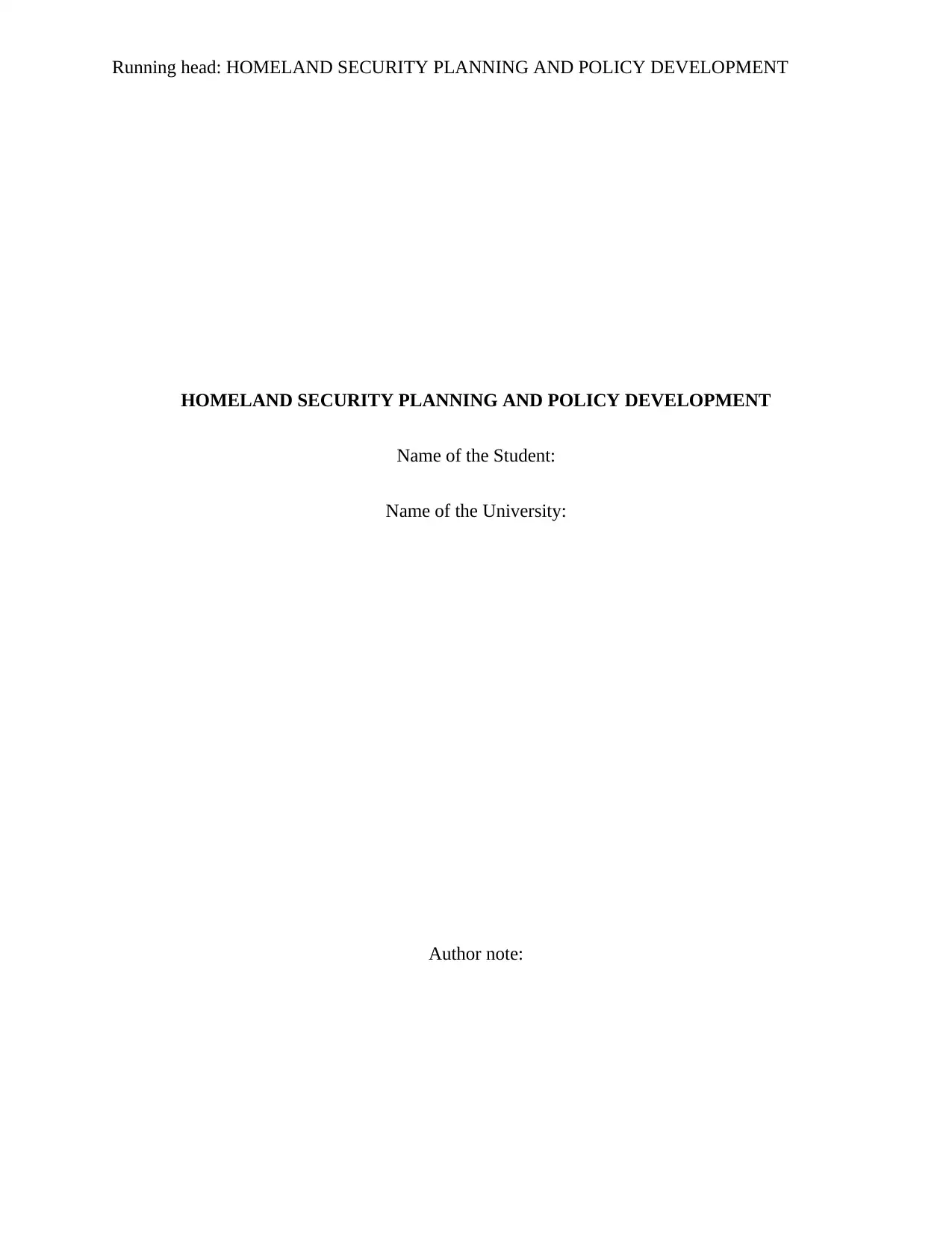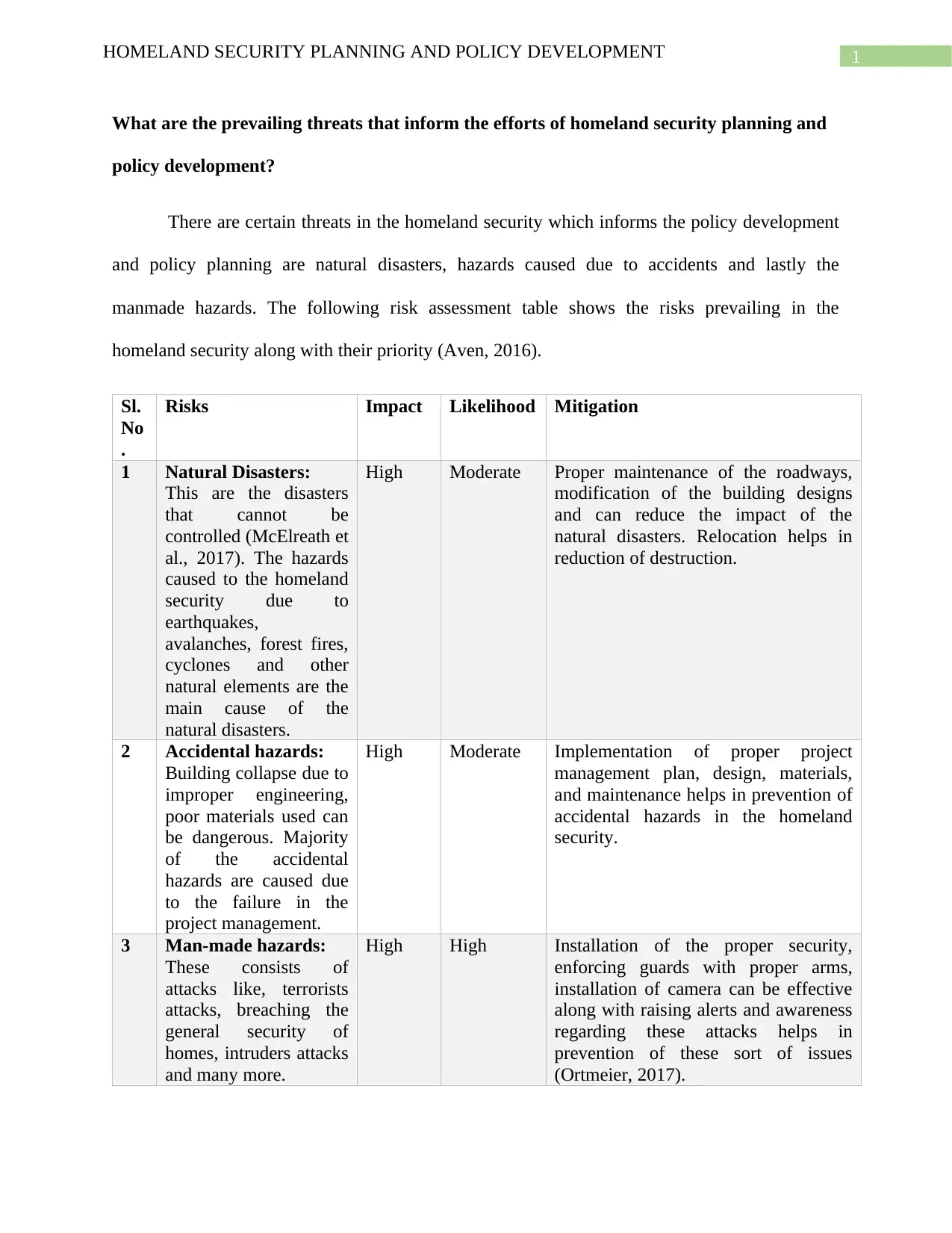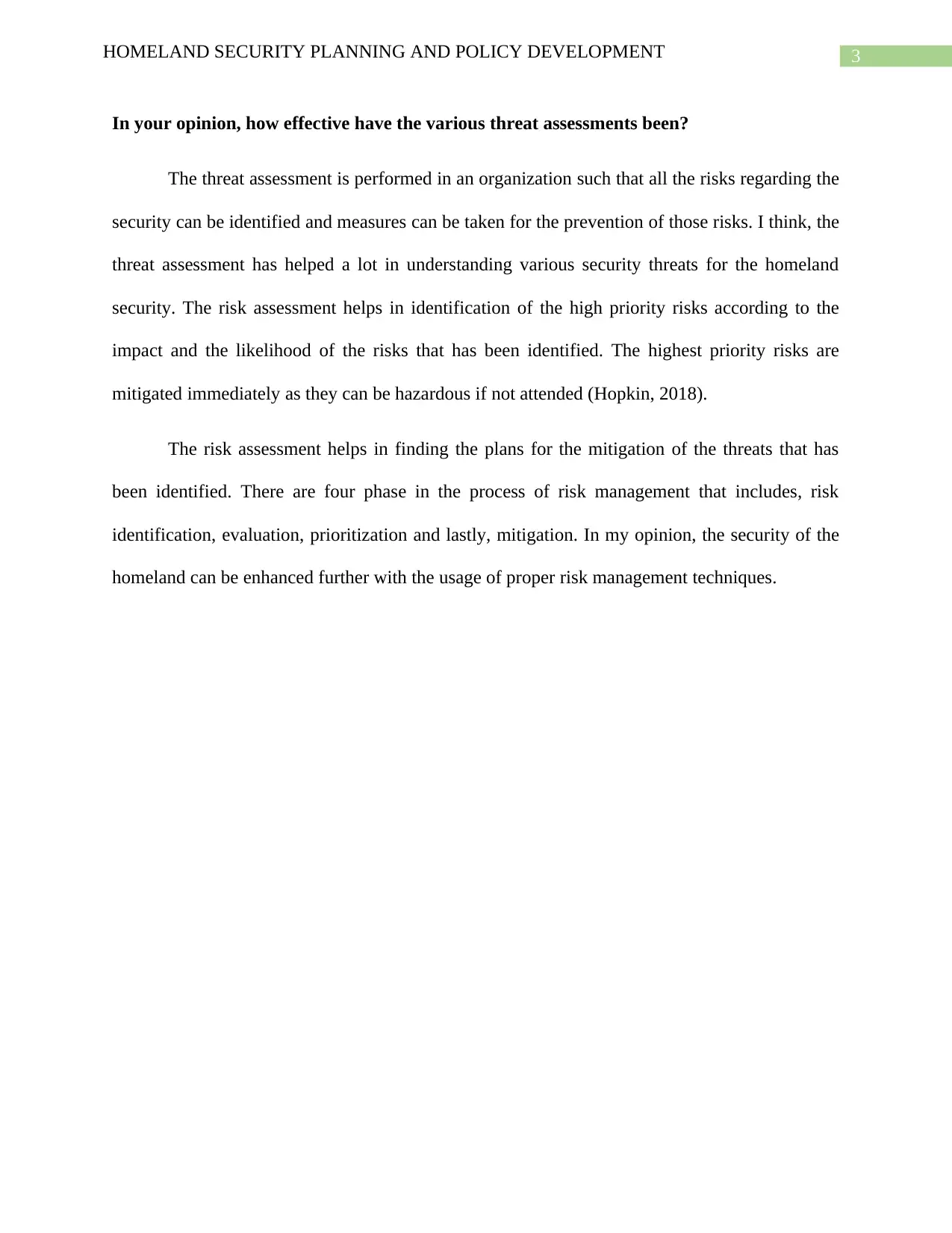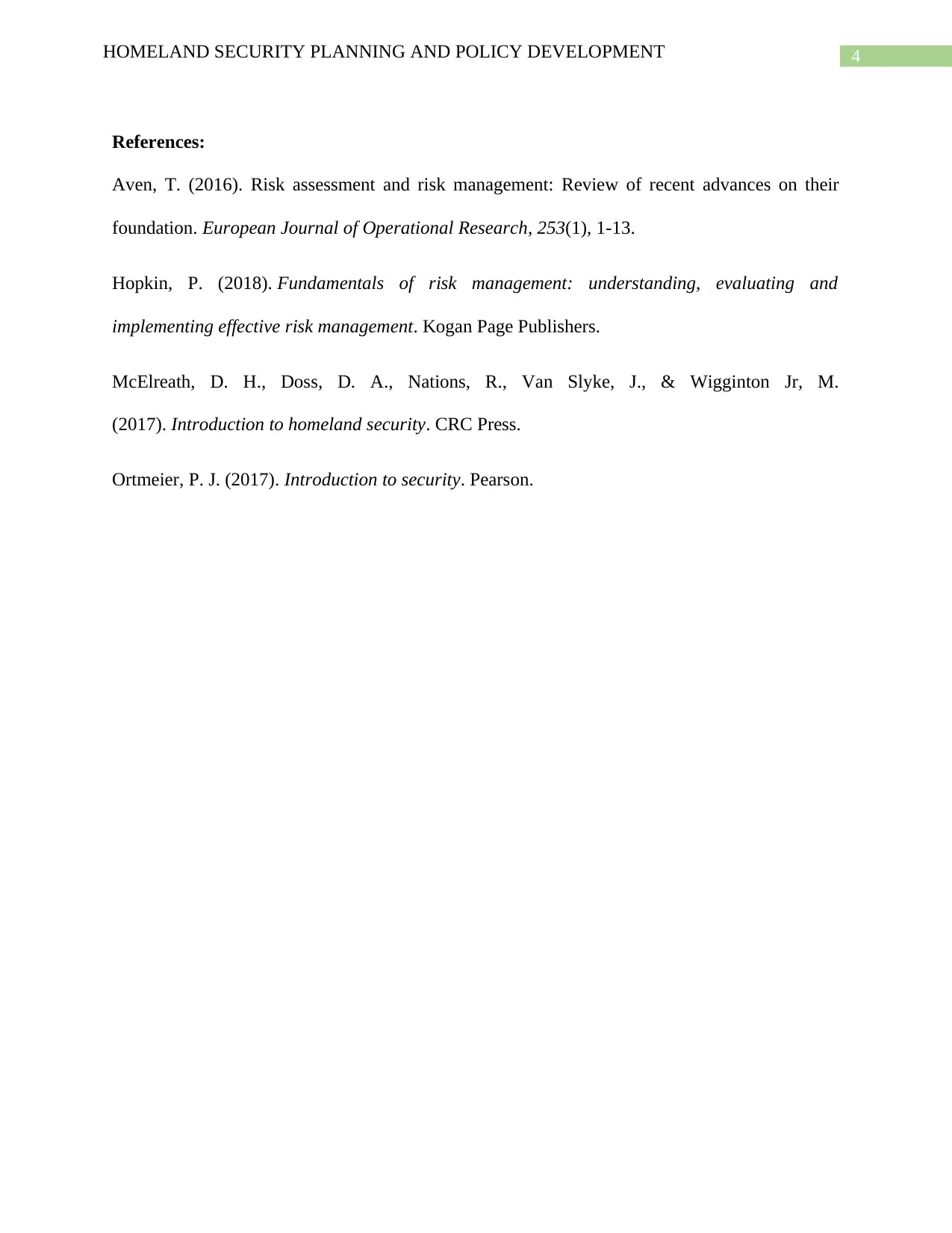Homeland Security: Risk Assessment, Mitigation, and Planning Report
VerifiedAdded on 2022/08/26
|5
|619
|17
Report
AI Summary
This report delves into homeland security planning and policy development, focusing on risk assessment and mitigation strategies. It identifies key threats, including natural disasters, accidental hazards, and man-made hazards, analyzing their impact and likelihood. The report emphasizes the importance of risk management, highlighting the four phases: identification, evaluation, prioritization, and mitigation. It underscores the significance of proactive measures like proper project management, security installations, and awareness campaigns to enhance homeland security. The author's perspective emphasizes the effectiveness of threat assessments in identifying high-priority risks and developing mitigation plans, ultimately aiming to improve the overall security of the homeland. References to relevant academic resources are included.
1 out of 5











![[object Object]](/_next/static/media/star-bottom.7253800d.svg)